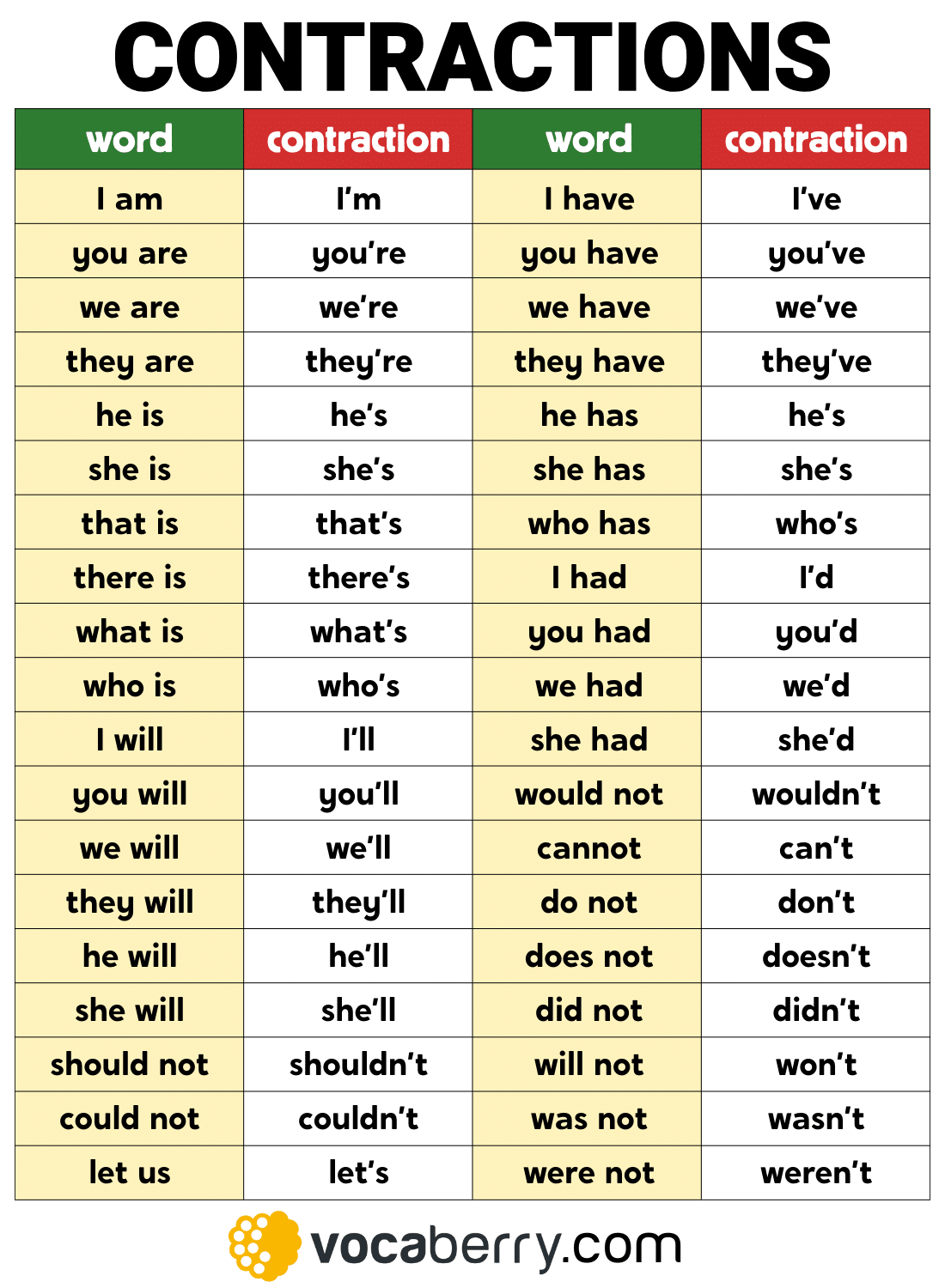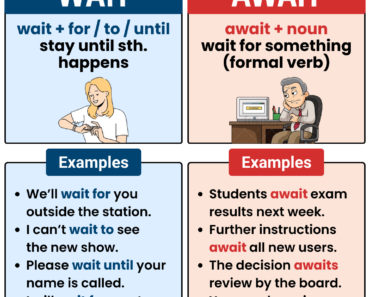
Contractions are everywhere in English. They make language sound smoother, faster, and more natural — especially in speech and informal writing. If you want to understand native speakers, write casually, or sound fluent, mastering contractions is essential.
In this article, you’ll learn what contractions are, how they work, when to use them, and see tons of clear examples to help you use them with confidence.
What Are Contractions in English?
A contraction is a shorter form of a word or group of words, created by removing certain letters and replacing them with an apostrophe (’). These are used to combine auxiliary verbs, modals, and the word “not” with pronouns or other helping verbs.
For example:
- I am → I’m
- do not → don’t
- she will → she’ll
Types of Contractions in English
Contractions can be grouped based on how they are formed. Below are the most common and useful types for English learners.
1. Subject + Verb Contractions
These are made by combining subject pronouns with common verbs.
| Full Form | Contraction |
|---|---|
| I am | I’m |
| You are | You’re |
| He is | He’s |
| She is | She’s |
| It is | It’s |
| We are | We’re |
| They are | They’re |
| I have | I’ve |
| You have | You’ve |
| We have | We’ve |
| They have | They’ve |
| I will | I’ll |
| He will | He’ll |
| They will | They’ll |
2. Negative Contractions
These are created by combining a verb with not.
| Full Form | Contraction |
|---|---|
| is not | isn’t |
| are not | aren’t |
| was not | wasn’t |
| were not | weren’t |
| do not | don’t |
| does not | doesn’t |
| did not | didn’t |
| has not | hasn’t |
| have not | haven’t |
| had not | hadn’t |
| will not | won’t |
| would not | wouldn’t |
| cannot | can’t |
| could not | couldn’t |
| should not | shouldn’t |
| might not | mightn’t |
3. Modal + Have Contractions
These are used with modal verbs and the word have, especially in perfect tenses.
| Full Form | Contraction |
|---|---|
| could have | could’ve |
| would have | would’ve |
| should have | should’ve |
| might have | might’ve |
| must have | must’ve |
| may have | may’ve |
4. Question Word Contractions
Used in informal questions, especially when speaking.
| Full Form | Contraction |
|---|---|
| What is | What’s |
| Where is | Where’s |
| Who is | Who’s |
| How is | How’s |
| When is | When’s |
| Why is | Why’s |
| Who will | Who’ll |
Common Mistakes with Contractions
Here are a few mistakes that many learners make:
1. It’s vs. Its
-
It’s = it is / it has
It’s a beautiful day. -
Its = possessive form
The cat licked its paw.
2. They’re / Their / There
-
They’re = they are
They’re excited for the trip. -
Their = possessive (belonging to them)
Their house is near the beach. -
There = location or existence
Let’s sit over there.
3. Using Full Forms in Casual Speech
Contractions sound more fluent and native in everyday conversation.
Too formal: I am not going to the party.
Natural: I’m not going to the party.







